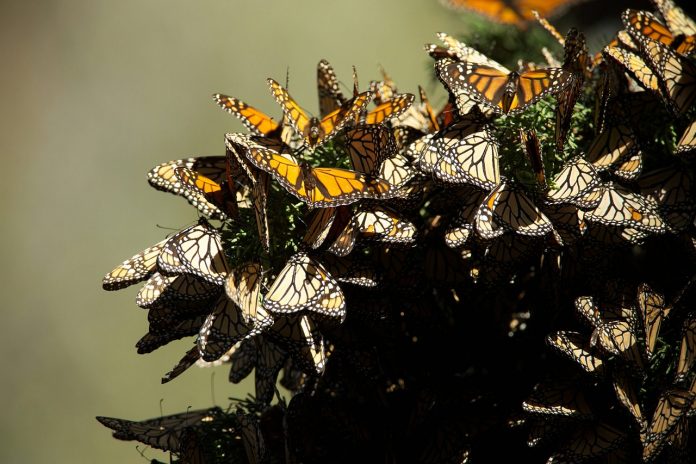The last few weeks of frigid temperatures made it clear that surviving winter is one of nature’s toughest challenges. Animals must either avoid the cold stress of winter or somehow cope with it.
Groundhogs, black bears, and most reptiles and amphibians hibernate.
Triggered by shorter days in the fall, hibernators enter an inactive state of slower metabolism characterized by reduced rates of respiration and heartbeat.
Fish literally slow down. In waters with temperatures approaching freezing, their metabolism drops significantly, though they remain active at a reduced rate.
Most birds migrate south to warmer areas where food is abundant. Some birds, such as cardinals and chickadees, simply eat enough food to get them through the night and into another day.
Insects
But what about insects? How do small creatures, many with adult life spans of less than one year, cope with winter? The most diverse and abundant animals on earth are masters of survival.
Insects comprise at least 75 percent of the animals known to man. And that figure is probably conservative. There are about one million named species of insects, and many entomologists believe that number just scratches the surface.
The estimated total number of species of insects ranges from 10 to 30 million.
Insects avoid winter extremes in the same ways that vertebrates do, but they do it from a variety of life history stages, not just as adults. Adult monarch butterflies, for example, leave the U.S. and Canada in September and fly to the mountains of central Mexico where they gather in fir trees by the tens of millions.
On warm days, they flutter about and may drink water from standing pools.
In late February, they begin the return trip north to complete one of nature’s most magnificent migrations.
Red admirals, painted ladies and American painted ladies are partial migrants. In the northern parts of their range, these butterflies die off in late fall.
Individuals from the southern portion of their range hibernate, and when they emerge in the spring, they head north to repopulate the northern range.
Some dragonflies also migrate south each fall, but they typically move just a few hundred miles.
Birders counting hawks at Hawk Mountain, Pennsylvania, often note days when green darners move along the ridge top in the fall.
Most insects, however, survive winter by entering an inactive state of arrested development called “diapause.” Some species, such as gypsy moths, eastern tent caterpillars, and preying mantids overwinter as eggs. Others overwinter in the larval stage.
The familiar rusty and black woolly bear caterpillar, for example, rolls into a ball in the leaf litter, pupates in the spring, and later emerges as an adult Isabella tiger moth.
Sulphur butterflies and fritillaries also overwinter as caterpillars. Many, if not most, insects overwinter in the pupal stage. Swallowtail butterflies and giant silkworm moths such as lunas and cecropias overwinter as cocoons.
And some insects actually survive winter as adults. Mourning cloaks, question marks, and commas overwinter as adult butterflies under loose slabs of bark.
These are the few species of butterflies that may actually use butterfly houses sold at garden centers.
Queen bumblebees, bald-faced hornets, and yellow jackets mate in the fall and spend the winter in underground burrows. In spring, they emerge to start new colonies.
And honeybees stay active all winter long; they keep the hive warm with heat generated by beating their wings.
No matter how insects enter diapause, the timing is cued to photoperiod. Shorter fall days signal that colder temperatures and snow are on the way.
Hormonal changes triggered by changing photoperiod initiate diapause.
Likewise, longer days and warmer temperatures in late winter and spring trigger hormonal responses that end diapause.
Regardless of the exact timing, it is critical that insects in diapause experience at least eight to ten weeks of cold weather. Without such a big chill, many insects cannot “awaken” properly.
As the climate becomes more extreme and unpredictable, it’s anyone’s guess what effect that will have on insect populations that require an extended period of cold temperatures to emerge from diapause.
But if insects emerge from diapause before sufficient foods are available, an ecological disaster could result.













